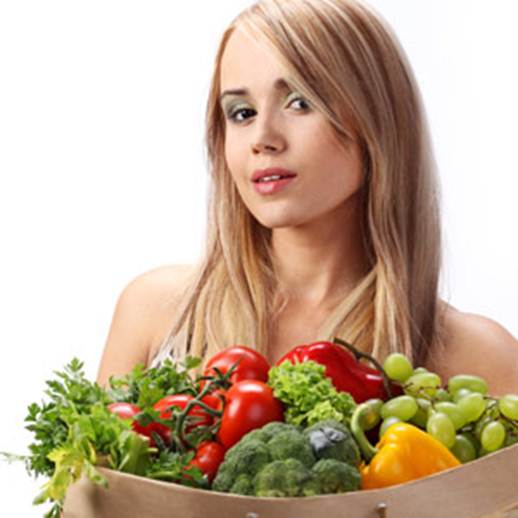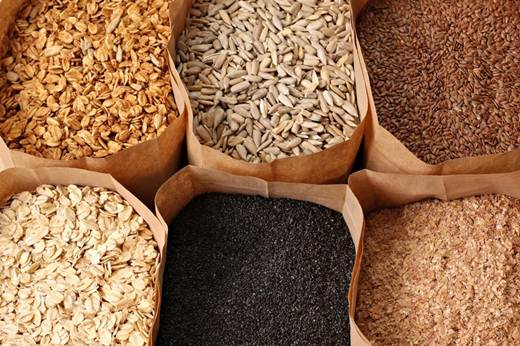With a few insider secrets, you can scan the
aisles to make your weekly food shop healthier. We show you how
Every girl loves to shop, but when you’re
on a diet or counting the pennies, food shopping can be a stressful task. You might
think you’re a savvy shopper, but supermarkets subject us to psychological
manipulation at every turn of the trolley. Making a list and not shopping on an
empty stomach go without saying, but the temptation of end-of-aisle offers, the
smell of freshly baked bread and the sound of classical music are all ploys to
make us part with our cash, says money saving expert Sarah Willingham
(lerssavesomemoney.com). Here’s our guide to beating the tricks, buying
healthier foods and saving cash.

Buying
healthier foods and saving cash
1. Buy local
Scan the fruit and veg aisles for
locally-grown produce. When fresh fruit and vegetables are grown and
transported from far-flung destinations, their nutrient-density is compromised.
The Food Standards Agency (GSA) found some frozen vegetables, such as broccoli,
contain more nutrients than ‘fresh’ vegetables that have travelled for 1,000
miles in under-refrigerated conditions. Produce such as apples and potatoes may
have been left in storage for up to six months before they make it to the
shelves, while spinach can lose between 50 and 90 per cent of its vitamin C
after picking if it’s stored at room temperature. Supporting local farmers and
buying seasonal produce will save you money and help reduce air pollution, too.
Your food is also less likely to have been treated with pesticides and
preservatives if food miles are lower.
2. Keep to the perimeter
Sticking to the outer aisles of the
supermarket will ensure you only fill your trolley with healthy goods. Here
you’ll find unprocessed, natural food items, such as fresh meat, fish,
vegetables and fruit. Choose a rainbow of vegetables. The variety of color
reflects their wide range of antioxidant-rich phytonutrients. ‘Supermarkets
will place everyday products such as fresh milk at the back of the store, so
you have to walk down the aisles, past all the offers,’ warns Willingham. When
you come to an aisles with a sign saying confectionary, crisps or soft drinks,
give it a miss. ‘These aisles should have the words “high sugar” above them
instead,’ says dietician Dr. Sarah Schenker.
3. Get canned
Check out the canned aisle for nutritious,
long-life foods. ‘Fish on the fresh counter can be really expensive unless
there’s an offer on,’ says Schenker. Canned salmon, sardines and mackerel are a
cheaper alternative, and will help you reach your quota of oily fish for less.
Look for fish in spring water, rather than oil, with no added salt. The same
goes for pulse. Buy chickpeas, lentils and beans to add bulk and fibre to
dishes without spending too much money on meat. Look for fruit canned in its
own juice rather than syrup as an easy way to reach your five-a-day.
4. Think natural
Avoid any product with more than five
ingredients, or those you can’t pronounce – they’re probably overly processed,
says Schenker. Processed foods will provide fewer nutrients and are less likely
to satiate your hunger. For example, refined or instant oatmeal takes less time
to digest than plain rolled oats, so you’ll be looking for snacks by
mid-morning. Opt for 100 per cent fruit juice and 100 per cent wholegrain foods
to get more vitamins and minerals. ‘The fresh aisles are bursting with pricing
tricks where you could be duped into paying more for your produce,’ says
Willingham. For example, a two-for-one offer might even cost you more money
than the non-discounted product.
5. Explore the free-from aisle
‘I’m not in the business of convincing
people they have an allergy or intolerance but you can benefit from checking
out the produce in the free-from aisle,’ says Schenker. Typically, these foods
contain a wider variety of healthy grains. Cereal bars are a classic example –
avoid sickly sweet, puffed rice bars from the cereal aisle, opting instead for
more wholesome bats in the free-from section, as they’re likely to contain more
nuts, seeds, dried fruit, oats and healthy grains. ‘However, always check the
ingredients list,’ says Schenker. ‘Just because a food is free from one
ingredient, it doesn’t mean the rest of the ingredients are healthy.’

these
foods contain a wider variety of healthy grains
6. Get shelf savvy
‘When it comes to fruit, salad, veg, dairy,
meat and eggs, reach to the back of the shelves for fresher foods,’ says
Willingham. ‘But remember, sell-by dates are there for the supermarkets to use.
If your vegetables are past their sell-by date, this doesn’t necessarily mean
they’re riddled with mould, so don’t waste them.’ Supermarkets also place the
products with the greatest profit margin – or those by brands who can pay for
the best positioning – at eye level. Small-scale, health food producers don’t
have big budgets, so make an effort to seek them out.
7. Avoid BOGOFs
‘Unless offers and discounts relate to
healthy store cupboard items, resist the temptation to buy them,’ says
Schenker. You will eat that family-sized pack of chocolate chip cookies if it
makes its way into your basket. Buy-one-get-one-free offers on fresh packet
foods, such as salad and stir-fry vegetables, are risky because the use-by date
on these is short, so bulk buying could lead to more waste. According to
Willingham, the average UK household wastes $ 1179 worth of food each year, so
only cave in to offers if you need the products.